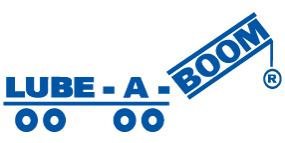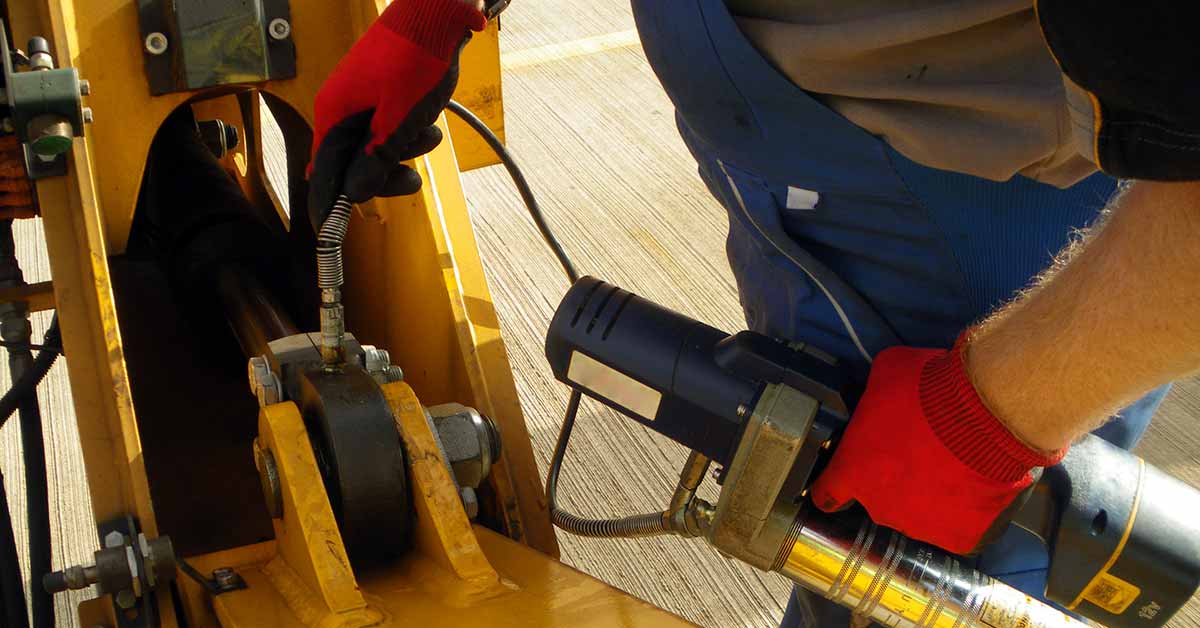Proper Lubrication for Industrial Crane and Heavy Equipment Maintenance
By: Jonathon Roberts
Jonathon is the Vice President of operations for specialty lubricant company, LUBE-A-BOOM. Jonathon and the LUBE-A-BOOM team dedicate themselves to providing lubricants to the heavy equipment industry.
A crucial part of crane and equipment maintenance is a proper lubrication routine. Service departments that routinely and properly lubricate their equipment will see less downtime, improved safety, and longer wear life on components.
Why is choosing a good grease a crucial part of your maintenance routine?
Proper equipment lubrication will enhance safety for operators. Improperly lubricated equipment will rattle, jerk, and generally not run smoothly. This can lead to dangerous working conditions for operators on a job site. Proper lubrication will also reduce equipment downtime. By keeping components on equipment properly lubricated with a good grease, you will extend maintenance intervals and keep your equipment working longer. Less downtime means your equipment will be more productive and have a higher rate of return on the investment you put into it. Shutting a crane down at a jobsite to lubricate it might seem like a major hinderance. But the few hours it takes to properly lubricate a crane will pay off in dividends to you, rather than facing several days or weeks of unscheduled maintenance to repair any parts that were broken because of improper or irregular lubrication. Many top-of-the-line greases now come in aerosol form, which makes lubricating crucial parts of your equipment even faster and more convenient.
Selecting appropriate greases and properly lubricating components on your equipment will cause less wear and tear on your machines, thus reducing the need for more costly maintenance and replacements parts. It may be tempting to purchase cheap grease or bypass lubricating all together, but it will cost you more in the long run if you cut corners. It is better to have a good lubrication routine with a reliable grease.
How do you know which grease to choose to keep your equipment running longer, smoother, and safer?
Greases come in a variety of forms and are purpose built for different applications. Understanding this and knowing how to use certain greases will greatly improve your maintenance routine, and reduce equipment downtime. The important differences to look for are the grade (viscosity) of the grease, the class of grease (petroleum vs. synthetic), and the additives in the grease. There are different ways to evaluate the effectiveness and durability of a grease, but for simplicity sake, we will look at these major factors.
First and foremost is to actually use grease to lubricate your equipment. Using any other substance could cause serious damage to your equipment and undue risk to your equipment operators. So before beginning any lubrication maintenance routine, always make sure that the substance you are using is in fact suitable for lubricating equipment. Even greaseless booms will need some sort of wax to keep them running smoothly and without damage.
Greases are comprised of different base oils and soaps. Synthetic based greases are the primary greases used in heavy equipment maintenance. The two primary types of synthetic grease seen in heavy equipment maintenance are lithium complex greases and calcium-based greases. In general, lithium complex greases are cheaper, but do not have the same level of performance as calcium-based greases. Calcium-based greases are usually more expensive but generally provide better performance in a wider variety of environments and applications than lithium complex greases. Calcium-based greases are inherently rust preventative and have excellent resistance to water washout compared to lithium greases. However there are certain applications where lithium grease applications are appropriate, such as chassis lubrication.
To support the performance of the base, grease will have additives. PTFE is a common additive to support the base. PTFE is generally a very helpful additive in any grease and one you should look for when selecting a grease. It enhances the lubricity of the grease and allows the grease to perform at much wider temperature ranges. Molybdenum is another additive that is common and allows grease to operate at extremely high heat without breaking down.
Greases are made with these different bases and additives because they are made to perform differently. While all grease might look similar, these unique properties are purposely designed to perform at different temperatures ranges, pressure ranges, environmental conditions, and equipment usage. For example, you would not want to use an open gear lubricant on a wire rope, and vice versa. And you would want to use an extreme high heat resistance grease for equipment such as hydraulic hammers. So when you select your grease, carefully read the label and see what its recommend use is. Look into the ingredients and determine if they are the best fit for your application.







